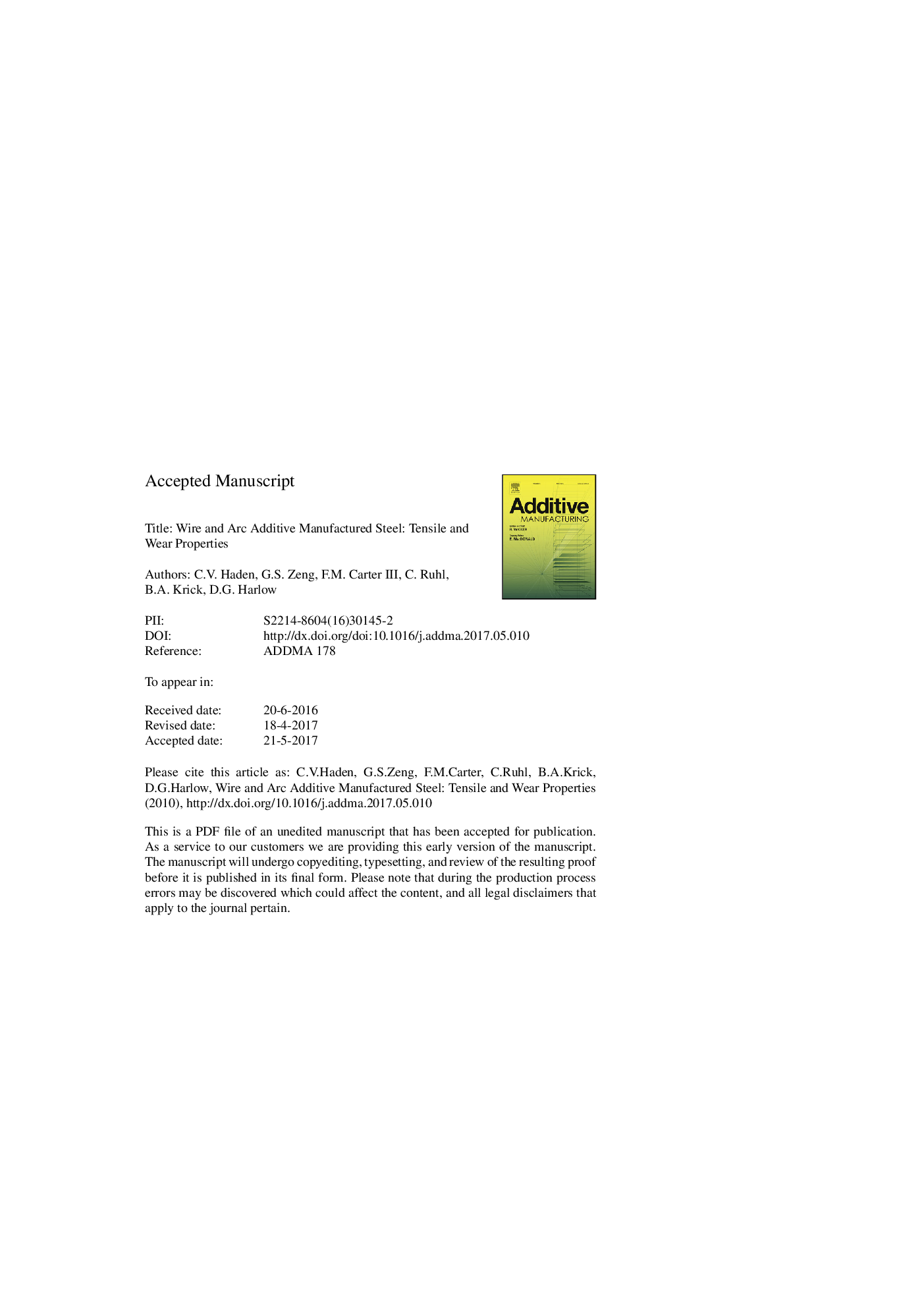| Article ID | Journal | Published Year | Pages | File Type |
|---|---|---|---|---|
| 5020129 | Additive Manufacturing | 2017 | 27 Pages |
Abstract
The present study systematically investigated the mechanical properties of wire-based (wire and arc additive manufacturing, known as WAAM) deposition of steel metals, both stainless steel 304 and mild steel ER70S. Graded material properties of stainless steel 304 were observed for wear and hardness in the direction of deposition and in Z height, due to variations in local thermal histories of the metal. Wear rates decreased significantly (p = 5.6 Ã 10â12 by one-way ANOVA) along the length of the deposited material, from K = 2.62 x 10â5 mm3/N m (+/â 2.32 x 10â6 mm3/N m), to K = 0.63 mm3 x 10â5 mm3/N m (+/â3.08 x 10-6 mm3/N m), whereas microhardness values increased significantly (p â¼Â 0 by one-way ANOVA) along the same path from μ = 202.3 HV and Ï = 5.82 HV to 210.9 HV and Ï = 5.91 HV. The yield and ultimate strength, however, were not found to be statistically significantly different (p = 0.55) along the direction of deposition for SS304. During wear testing, a grain refinement was observed directly beneath the wear scar in these materials in a focused ion beam channel observed under scanning electron microscopy. Additionally, no significant difference in yield strength was observed in printed mild steel (ER70S) between vertical and horizontal specimens. The observed graded mechanical properties in stainless steel 304 allow the opportunity for varying the processing conditions to design parts with locally optimized or functionally graded mechanical properties.
Related Topics
Physical Sciences and Engineering
Engineering
Industrial and Manufacturing Engineering
Authors
C.V. Haden, G. Zeng, F.M. III, C. Ruhl, B.A. Krick, D.G. Harlow,
